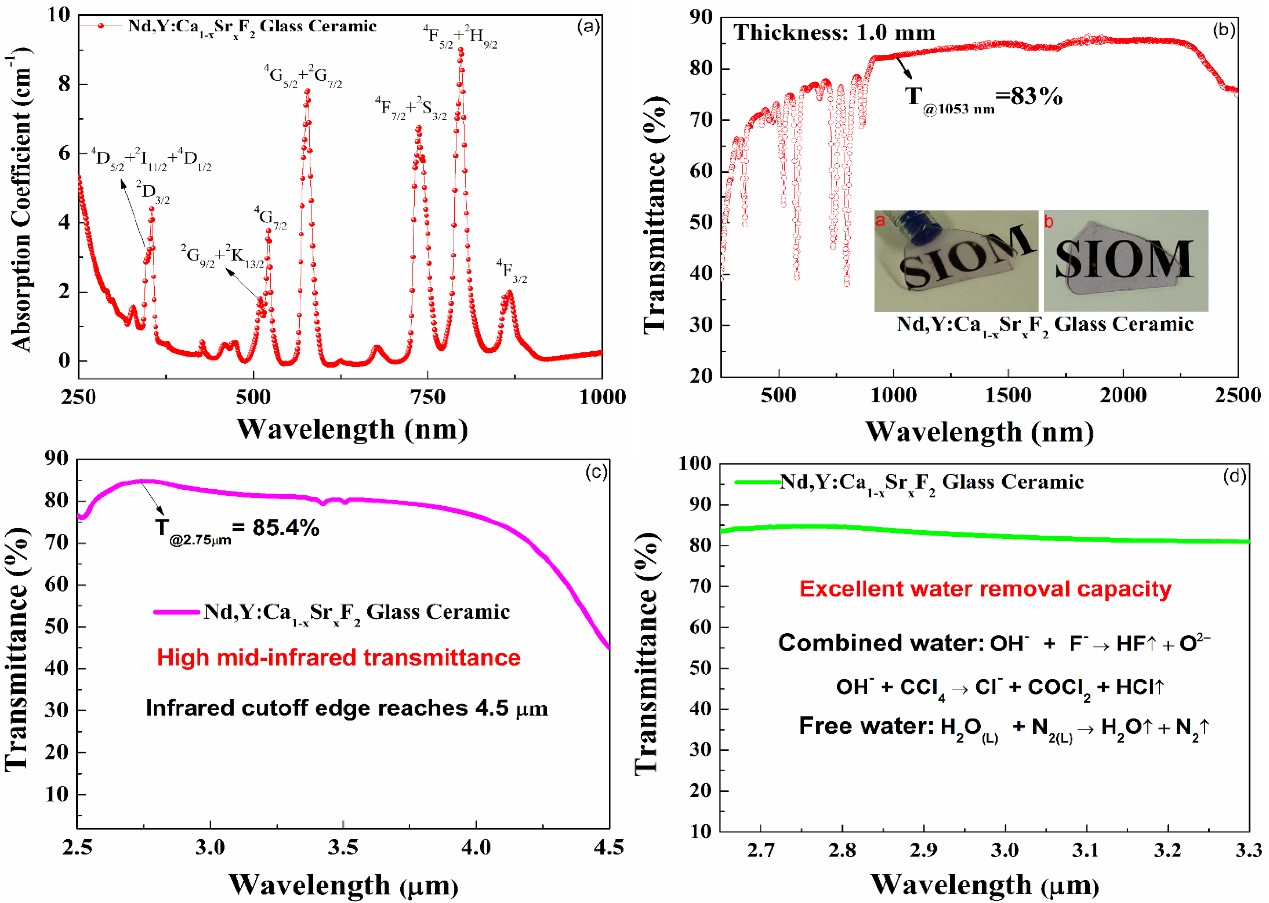Among laser materials, Nd,Y-codoped Ca1-xSrxF2 is considered an ideal host material for rare-earth ions because of their low phonon energy, small nonlinear refractive index, wide transparency range, and high thermal conductivity. However, the transparent ceramics and single crystals can’t meet the development needs due to their own bottlenecks. Glass ceramics (GC), which possess both glass and crystal properties, can effectively solve the problems with the single crystals and ceramics. Therefore, Nd,Y-codoped Ca1-xSrxF2 glass ceramics have been attracting researchers' attention.
Traditional glass ceramic preparation methods, which involve glass melting and post-heat treatment, possess a low preparation efficiency, uncontrollable crystal phase, and high energy-consumption. It is extremely difficult to fabricate glass ceramics that contain crystals doped with complex specific components. To overcome the obstacles, researchers have obtained CaF2 or SrF2 glass ceramics via the liquid-phase sintering (or co-firing) in previous works. The liquid-phase sintering method is more controllable and flexible than traditional preparation methods. However, it requires a series of complicated operation processes, including ball milling and precision sintering. The yield of this method is also very low due to corrosion between the glass phase and crystal phase during co-firing. Therefore, it is unsuitable for practical applications.
Recently, a research team led by Professor ZHANG Long from Shanghai Institute of Optics and Fine Mechanics of the Chinese Academy of Sciences has developed a controllable spontaneous precipitation (CSP) technique and obtained Nd,Y-Codoped Ca1-xSrxF2 glass-ceramic. Their study was published in Ceramics International.
In the experiment, they discovered the desired crystals would spontaneously deposit in the glass during cooling molding due to saturation reduction.
The corresponding principle is similar to the dissolution and re-precipitation of sugar. The preparation process is no different to ordinary glass preparation. This technology can greatly simplify the preparation process of glass ceramics and improve the preparation efficiency. Moreover, the CSP technique makes it easier to achieve property design and control of samples than existing preparation methods.
Meanwhile, the prepared sample exhibited high transmittance, large absorption coefficient, intense 1.053 μm photoluminescence, large emission bandwidth, and moderate lifetime, which are powerful candidates for application in ultrashort pulse lasers. In addition, the samples also showed low phonon energy, a low absorption coefficient of –OH, and high mid-infrared transmittance, which is expected to be applied in the field of mid-infrared.

The absorption spectrum and transmission spectrum of the Nd,Y-codoped Ca1-xSrxF2 glass ceramic, respectively.
Article website: https://doi.org/10.1016/j.ceramint.2019.08.199
Contact:
Mr. Cao Yong
General Administrative Office
Shanghai Institute of Optics and Fine Mechanics, CAS
Email: caoyong@siom.ac.cn